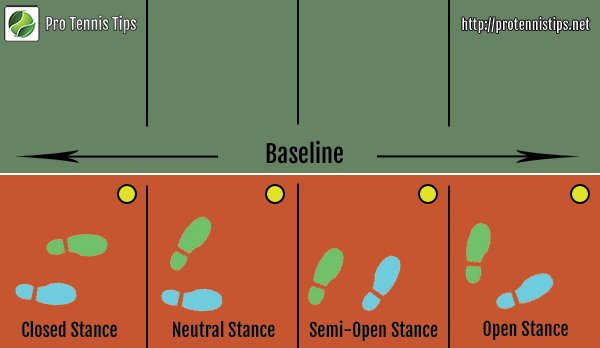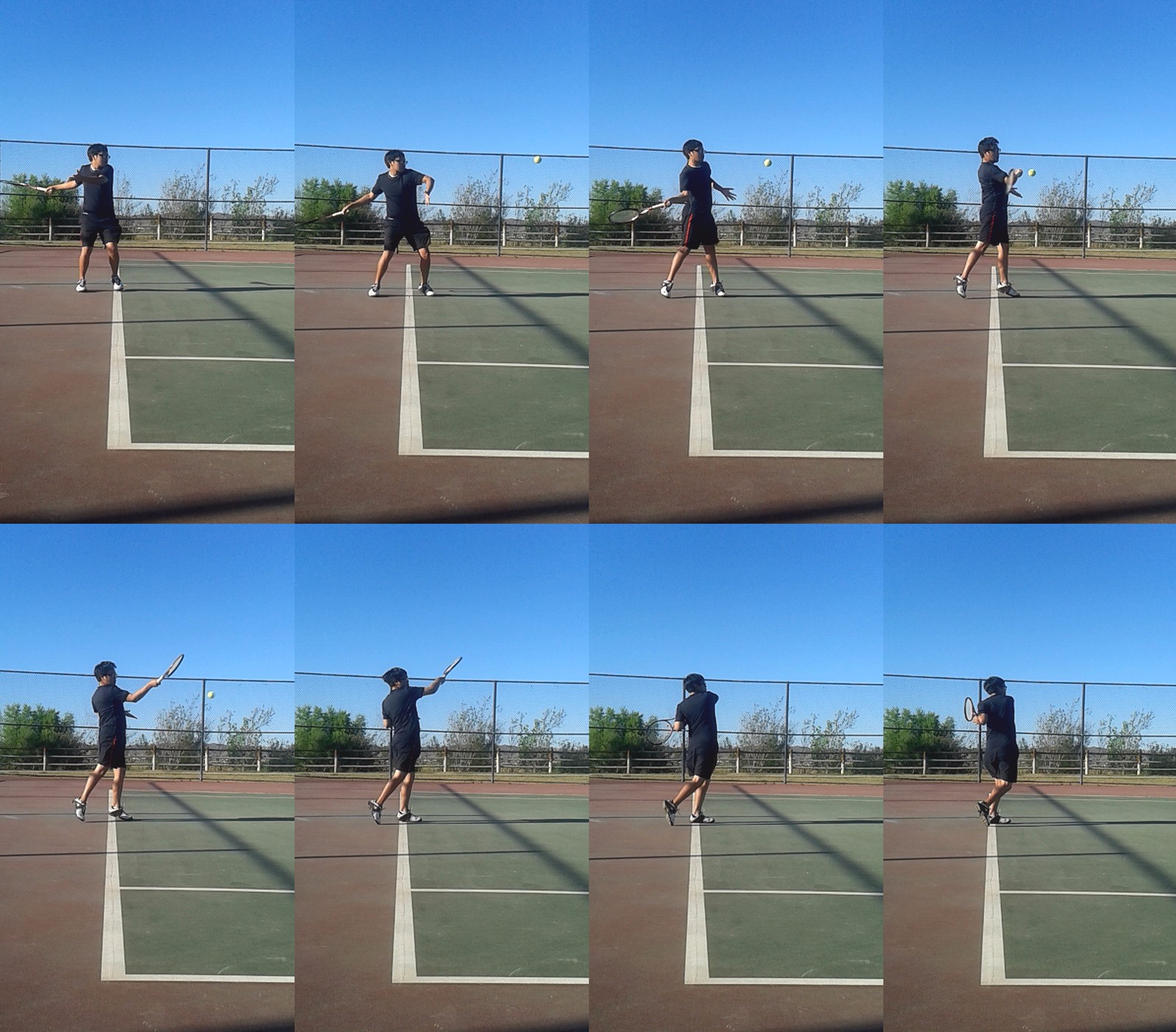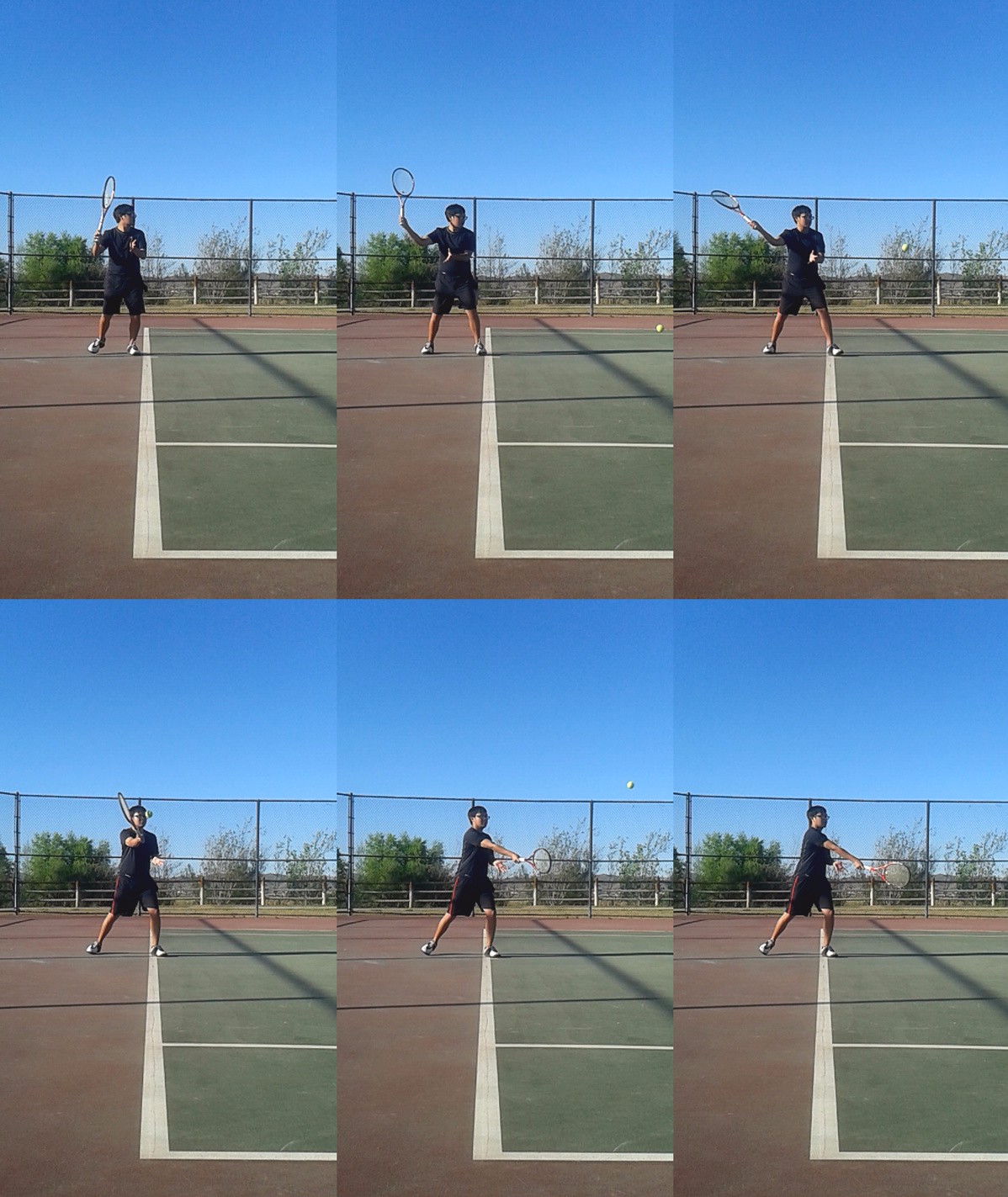How-to: Tennis Forehand
Your forehand will need to be your strongest stroke in a game since you’ll be executing it with your dominant hand. Because of this, a tennis forehand will be your best weapon in a match, but it will take lots of practice to master a killer one. Starting off, you’ll probably learn the tennis forehand slowly, emphasizing consistency over power. Your main priority when first learning the tennis forehand is to just get it over the net. As your skills develop, however, you’ll find that your forehand will gradually improve, resulting in faster shots and strokes that glide right above the net. So with that being said, let’s go over the tennis forehand.
How-to: Tennis Forehand
The tennis forehand is a rather simple stroke to learn although difficult to master. In order to perform a forehand, you should hold the racquet handle with either a Eastern, Western, or a Continental grip–although this will depend on what type of forehand shot you’ll be hitting. The best way to perform a tennis forehand is by bringing your dominant hand and foot back, applying most of your weight into this position. Doing so allows you to put an incredible amount of force into the ball once you shift your weight from the back to the front at the point of contact. This helps you to add more power to your shots while also allowing you to transition through the natural motions of the follow through (which is super important). However, there are a few different types of tennis forehand shots to choose from.
Types of Tennis Forehand Shots:
- Flat shot
- Topspin
- Slice
- Inside out forehand
- Moon ball
- Swing volley
Flat shot
The flat shot is a very fast tennis forehand that will travel straight through the court, giving your opponent less time to react and return the ball. The grip you would use is a Western grip.
1. Starting off in the ready position, keep an eye on the ball as it approaches.
2. Move toward the ball while bringing your racquet back, marking the point at which you will hit the ball. Take one of the four stances: open stance, neutral stance, semi-open stance, or closed stance (depending on how much timing you have).
 3. Once you’ve chosen your stance, apply most of your weight into your back foot, transferring all of that weight to your front foot as you hit the ball.
3. Once you’ve chosen your stance, apply most of your weight into your back foot, transferring all of that weight to your front foot as you hit the ball.
4. Follow through by swinging your racquet toward your opposite side. The follow through gives you a full swing, which allows you to apply all of your power into your shot.
Topspin
A topspin shot is a tennis forehand that utilizes topspin, which causes the ball to gravitate toward the ground more quickly, allowing for a higher bounce that is hard to return. For a topspin shot, you would need to use a Eastern or a Western grip.
1. To start off, begin in the ready position.
2. As you move towards the ball, you will have to take one of the four stances (based on timing): open stance, neutral stance, semi-open stance, or closed stance.
4. Up to this point, the topspin shot is exactly like the flat shot. The main difference between the two however is the racquet motion you use to hit the ball. In order to perform a topspin shot, brush the ball with the racquet face in an upward motion. Doing so will give the ball topspin, which will cause it to fall toward the ground more quickly, resulting in a higher bounce.
5. Of course, finish off with the follow through, making sure your racquet goes through the natural motions of the full swing.
The slice shot is a tennis forehand with backspin, which will cause the ball to bounce lower while also changing direction while it moves through the air and bounces on the ground. You’ll be using the Continental grip grip for this shot.
1. Be prepared in the ready position.
2. Approach the ball while taking up one of the four stances: open stance, neutral stance, semi-open stance, or closed stance.
3. Once you choose a stance, have your racquet back above your shoulder.
4. The swing required is a brushing motion, which you can imagine as a sideways slash at the outside of the ball. Opposed to a flat shot where you hit the ball directly at the center, a slice focuses on generating backspin by hitting the ball from high to low.
An inside out forehand is a shot where you run around your backhand in order to hit a forehand instead. This shot is mostly used when you have more time to control the general direction of the ball. You can use any tennis forehand technique for this shot.
1. Start in the ready position.
2. Determine where the opponent’s ball will land.
3. Instead of running around your backhand, which requires a lot of energy, it is best to side step your way towards the other side of the ball. At this point, which shot you choose to perform is up to you, but the best strategy is to either hit a winner or hit a shot that will set you up for a winner.
Moon ball
The moon ball is effectively a lob with topspin. This shot can be a good change of pace with your strategy because it will give you more time to recover from certain situations.
1. The way you start off is in the ready position.
2. Approach the ball, taking one of the four stances: open stance, neutral stance, semi-open stance, or closed stance.
3. Once you pick a stance, you will need to bring your racquet back. Instead of a topspin shot where you hit through the ball, you will be hitting it while your weight is in the back foot.
The moon ball is a tennis forehand that is mostly used as a defensive shot but it doesn’t stop you from playing aggressively. One way to use it aggressively is by hitting the ball above your opponent’s head while they are volleying at net.
Swing Volley
The swing volley is a very aggressive approach shot where you perform a tennis forehand before the ball has had the chance to hit the ground, giving your opponent less time to react to the shot. You can use any tennis forehand technique for this shot, although the flat shot and topspin shot are most common.
1. The position you start off with is in the ready position.
2. You will need to run to the ball before it can bounce, and it’s easier to hit when you are in the air–one or two inches off the ground is sufficient.
3. Instead of using weight and shifting it from the back to the front, you will be using the momentum of the approach to produce the shot’s power. So, how hard you hit the ball will be wholly dependent on how fast you move toward the ball.
4. When you reach the point of contact, the best way to hit the ball is by swinging straight, which will cause the ball to fall proportional to the amount of topspin you add.
The best place to aim for is away from your opponent, which will give you enough time to approach the net and assume the ready position.




